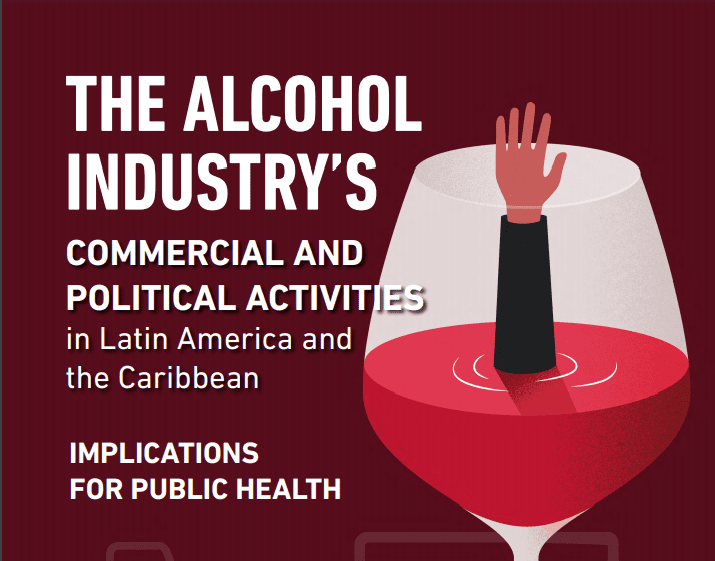In recognition of the fact that in Latin America and the Caribbean the harmful use of alcohol is one of the leading risk factors for death and disability, the report acknowledges that «alcohol does not receive due attention and action» (foreword). The report is a contribution to bringing about this due attention by pointing to the role of the alcohol industry in influencing regional policies that affect public health and social welfare.
A contribution to stregthening civil society response
The report
shows how the alcohol industry uses tactics that resemble those of other unhealthy commodity industries (ultra-processed food, sugar-sweetened beverage, and tobacco). The report describes the industry actors and how they oppose effective alcohol policies and actively engage in strategic practices that compromise public health in the region.
The report is researched and written by Katherine Robaina, Thomas Babor, Ilana Pinsky and Paula Johns, and is published by the four civil cociety organisation NCD Alliance, Global Alcohol Policy Alliance, Healthy Latin America Coalition, and Healthy Caribbean Coalition. FORUT has contributed financially to the publication. The organisastions behind the report see it as an important contribution to strengthening the civil society response, calling out industry tactics and policy interference and attracting greater support for advocacy efforts.
The region and the industry
Rising rates of alcohol consumption, as well as binge drinking patterns among young people have contributed to the increasing burden of disease and injuries in Latin America and the Caribbean. The harmful use of alcohol is a leading risk factor for death and disability in the region, particularly among males (Pan American Health Organization, 2015).
for disability-adjusted life-years among men in Latin America. In this contetxt the report shows is the alcohol industry putting in time and resources to undermine and halt the implementation of effective alcohol and alcohol control policies. The activities of the industry that have implications for public health were found to be diverse, multifaceted, and widespread in the LAC region. Commercial activities include the concentration of ownership of alcohol brands and products by a small number of transnational alcohol corporations, and use of sophisticated marketing techniques to target adolescents and other vulnerable groups. Strategies include information campaigns to achieve strategic objectives, constituency building, substituting ineffective for effective policies, using financial measures to influence favorable policies, and legal action. Tactics such as lobbying, image advertising, building strategic alliances, and litigation in the courts are used to influence industry-favorable policies in four key areas: alcohol availability, alcohol pricing and taxes, marketing regulations, and drink-driving countermeasures.
Organisation of the report
The report is divided into four sections. The introduction provides an overview of the alcoholic beverage industry and explains the implications of recent developments for public health. The second part describes commercial strategies, including targeting new customers, social and digital marketing, and retail methods designed to increase alcohol sales. The third section describes how the alcohol industry gains access to the political arena through CSR and CPA, and includes an impact assessment of the major alcohol policy areas: increasing alcohol availability; illicit and informal alcohol; marketing; labelling; pricing; and drink-driving. The final section draws conclusions and makes recommendations for the alcohol industry and other stakeholders.






